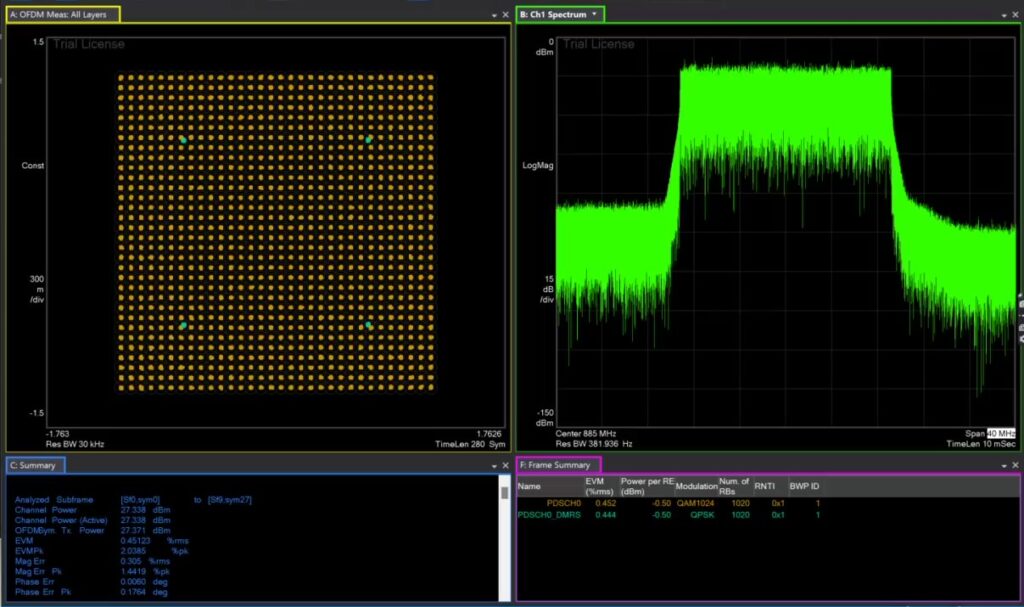The wireless signals used today to connect over 1 billion 5G devices are adversely noisy. This imposes additional energy, spectrum, and infrastructure costs on today’s networks, and as demand for wireless connectivity increases, these costs will only grow. Reducing the noise present in those signals will have several knock-on effects, helping to address power consumption, spectrum utilization, and installation costs in communication networks today.
Why “pump up the volume” isn’t the answer

A crowded restaurant, full of people having conversations.
What do we mean by noise? Technically speaking, noise is an unwanted disturbance in a signal. Noise can trespass into our signal as the signal travels through wires or antennas, or it can be inherent to the generation environment of the signal. Excessive noise in our signals limits precision which can hinder high data rate encoding, signal propagation, and ultimately successfully receiving the signal.
Noisy signals have a low Signal-to-Noise ratio – or SNR – which requires more work to transmit. This is a ratio between the strength of the signal and the noise present. High SNR is good: there is a lot of signal in comparison to noise. Low SNR is bad: the signal is not easily distinguishable from the noise. A simple analogy to how this works is talking in a noisy restaurant. Your date may tell you “It’s hard to hear you over the noise;” you’ll likely then raise your voice. This intuitive approach is the same when transmitting noisy signals: turn up the signal strength. For most applications, including restaurants, this works at first. Your date can hear you better and your conversation continues.
However, turning up signal strength to increase SNR can only go on for so long. The restaurant analogy continues with the people sitting next to you raising their voices to compensate for the noise of your louder conversation. The analogy ends with a positive feedback loop and everyone in the restaurant is yelling. Similarly, 5G signals today are screaming! Signals must be transmitted at higher and higher strengths to compensate for so much background noise. This is a problem in crowded environments, and unfortunately as demand grows, more of our environments are becoming crowded.
More Power + More Spectrum = More Cost
Transmitting noisy signals at higher and higher strengths has three main consequences: more power is required, more spectrum needs to be purchased, and installation costs go up.
- Turning up signal strength to increase SNR increases the power required to synthesize that signal, meaning a larger energy bill to operate networks globally.
- Spectrum is getting crowded. It’s full of high-strength noisy signals that can’t have much data. However, demand for data continues to increase, leading to demand for new spectrum. Additional spectrum is only available at higher frequencies, hence the movement toward purchasing millimeter wave spectrum.
- Both points one and two contribute to higher installation costs. More power required means dedicated power sources and cooling equipment. Operating at higher frequencies means smaller propagation so cells must be placed at every block for continuous coverage.
These are not long-term solutions. A better solution is to improve SNR by reducing noise.
Reducing the Noise in 5G
With wireless communication, reducing noise in the signals transmitted can provide savings across all three of the areas raised above: power consumption, spectrum utilization, and installation costs. This is the equivalent of enunciating your words rather than raising your voice in a noisy restaurant. By removing noise the SNR goes up, not as much power is needed, and more data can be encoded.

Pictured is one example of ultra clean signal generation from the source. Eridan’s transmitter is capable of producing signals with very little noise from the start, making encoding more data easy.
This means already purchased low to mid-band spectrum, with propagation advantages, has 25% more data capacity instantaneously. Savings in installation costs come from reduced power consumption, reusing spectrum with better propagation, and the fact that clean signals can be recovered at farther distances than their noisy counterparts.
Eliminating noise from signals should really start with the source. Reducing noise inside the transmitter, where the signal is first generated and amplified, is crucial. Less noise in the radio enables higher data rate encoding and reduces the need for larger signal strengths. Nipping this noise problem in the bud also means every step after has a better starting SNR.
Removing noise is easier said than done, and it wasn’t really possible until recently. Legacy radio technologies did not have good methods for noise removal, but that was ok because legacy networks did not suffer due to lower demands. Since network requirements have increased, there have been new technical advances that help to reduce noise in signals, such as digital predistortion and envelope tracking techniques. Deploying any technique that significantly reduces or even eliminates noise on a global scale can result in substantial savings immediately.
In addition to the instant benefits wireless networks would experience with significant noise reduction/removal, this practice sets networks up for the future. In a world where wireless networks are becoming essential access points to education, opportunities, and resources, we need to operate them efficiently as possible. Sending cleaner signals is the sustainable mindset required to provide wireless connectivity globally for generations to come.